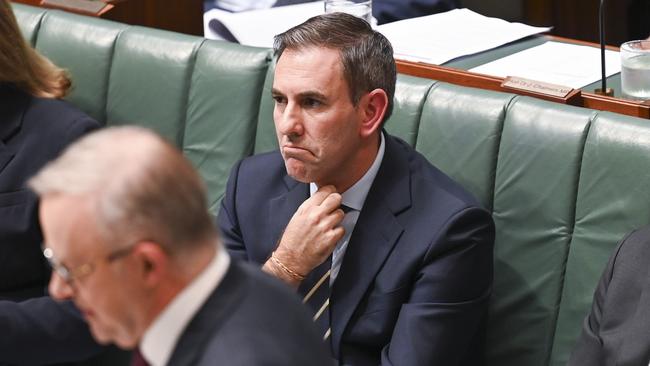One million workers to be captured by top tax bracket in 2024-25
Labor’s stage three tax revamp will fail to stop Australians in the highest income tax bracket rising to about one million people, with the share of workers in this bracket rising to 7.4 per cent

The number of taxpayers in the highest income bracket has almost doubled in five years, despite the top threshold being lifted by $10,000 next year, leaving the wealthiest Australian workers paying a much greater share of tax than before the three-stage reforms began.
About one million people will pay the top tax rate of 45c in 2024-25, with the share of workers in this bracket rising from 4.4 per cent in 2019-20 to 7.4 per cent.
The analysis from Ben Phillips at the ANU’s Centre for Social Research and Methods shows greater numbers of Australians being forced into the highest tax bracket even though the top marginal rate will kick in at $190,000 instead of $180,000 under the July 1 changes.
These workers will contribute 36.9 per cent in 2024-25 – a marked increase on the 31.6 per cent they contributed in 2019-20.
Professor Phillips told The Weekend Australian: “It’s quite clear that in spite of the tax cuts in July, the share of tax paid by high-income earners remains very high and a highly progressive tax system remains in place.”
With tax from individuals forecast to be 46.7 per cent of all government receipts – rising to 49 per cent in 2027-28 – the one million workers in the top tax bracket will contribute $1 out of every $6 that goes into government coffers next year. All taxes and non-tax receipts are forecast to total $698.4bn.
Jim Chalmers this week championed the revamped stage three income tax cuts as Labor’s key cost-of-living measure in the budget, declaring the average benefit was $1888 a year – or $36 a week.
But experts warned Australia had an over-reliance on taxing personal incomes. The general manager of technical policy at the Institute of Public Accountants, Tony Greco, said this problem would be compounded by the ageing population and took aim at the budget for failing to address the structural problem in the system.
“The number of people working as a proportion of those who have retired shrinks. So, not only are we taxing this source disproportionately, but it’s going to shrink,” Mr Greco said.
He said the top marginal tax rate of 47 per cent, including the Medicare levy, was an internationally high rate that kicked in at a “relatively low $190,000”.
“I think the answer is it won’t help with productivity or for aspiring people to work the extra hour,” he said. “I think that’s the issue. It starts to bite productivity and that’s one of the reasons productivity is lagging … it’s not a healthy statistic.”
He said this was “not a good situation … because we want innovation and people to start businesses and reward risk taking”.
“We had a budget which was lacking any tax reform. We are not addressing some of the structural issues with the tax base.”
Bob Breunig at the ANU’s Crawford School of Public Policy said he was not surprised at the growing numbers of Australians in the top tax bracket, and warned a smaller number of taxpayers were paying a greater share of tax.
He said the tax system had an increasingly “narrow base and a high rate”, adding: “We have tended to approach tax in the opposite of what theory suggests.”
One consequence was a “pretty steady and marked increase in the use of trusts and people moving out of that personal income tax net”, Professor Breunig said.
“So we are going to have more and more people retiring. Those people – we don’t ask them to do very much.
“We don’t tax the superannuation they receive. We don’t tax their million-dollar houses. We give them free aged care. And we let them pass their million-dollar houses on to their children unencumbered by tax,” Professor Breunig said.
“All the working stiffs in the middle will pay for it. That doesn’t seem like the way you would design a fair tax system.”






To join the conversation, please log in. Don't have an account? Register
Join the conversation, you are commenting as Logout